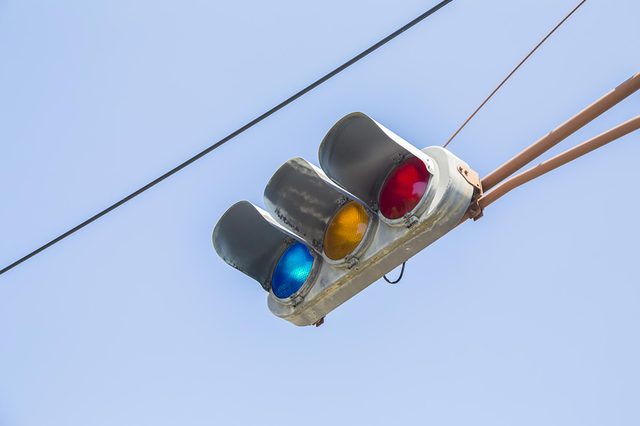pandacracker
Justified & Ancient
- Joined
- Jan 16, 2004
- Messages
- 1,745
Regarding my comment above on Japanese traffic lights- there is an article about it here that some may find interesting;
This Is Why Japan Has Blue Traffic Lights Instead of Green
This is what happens when you have one word for two colors.

It’s a lesson most of us learn years before we’re old enough to see over the dashboard: Red means stop, green means go. Simple enough. But what happens when you live in a culture where green also means blue? (By the way, this is why our own traffic light colours are red, yellow, and green.)
Drive around Japan long enough and you’ll probably run into one of the country’s mythical blue traffic lights. Elsewhere around the island you’ll find “go” signals that are decidedly teal, turquoise, and aqua. “Is this signal broken?” you might wonder. “Did some overworked light-monger install the wrong bulbs?” The answer is not in the wiring: it’s in the Japanese language.
Hundreds of years ago, the Japanese language included words for only four basic colors: black, white, red, and blue. If you wanted to describe something green, you’d use the word for blue—“ao”—and that system worked well enough until roughly the end of the first millennium, when the word “midori” (originally meaning “sprout”) began showing up in writing to describe what we know as green. Even then, midori was considered a shade of ao. As you can imagine, this sudden switch-over had lasting effects in Japan. One of the most popular forms of Japanese wordplay is numeric substitution—writing numerals in place of words or letters with the same phonetic value.
Today you’ll still see green things dubiously labeled blue. A fruit vendor might sell you an ao-ringo (blue apple) only to disappoint you that it’s actually green. Likewise, green bamboos are called aodake (“blue bamboos”) and an inexperienced employee who could be described as “green” in America may be called aonisai, meaning a “blue two-year-old.” And that brings us to traffic lights.
Initially, Japan’s traffic lights were green as green can be. Despite this, the country’s official traffic documents still referred to green traffic lights as ao rather than midori. While international traffic law decrees all “go” signals must be represented by green lights, Japanese linguists objected to their government’s decision to continue using the word ao to describe what was clearly midori. The government decided to compromise. “In 1973, the government mandated through a cabinet order that traffic lights use the bluest shade of green possible—still technically green, but noticeably blue enough to justifiably continue using the ao nomenclature.
So, while it may appear that Japan uses blue traffic lights, the government assures us it’s actually just a very blue shade of green—green enough to satisfy international regulations, blue enough to still be called ao. Don’t ever say bureaucracy never solved anything.
Source: https://www.rd.com/article/heres-japan-blue-traffic-lights/
You took the words right out of my mouth!
feeling your own heart beating and are reminded acutely that it is the only thing keeping you alive.
That and the Sacrifices made to the Old Ones.


